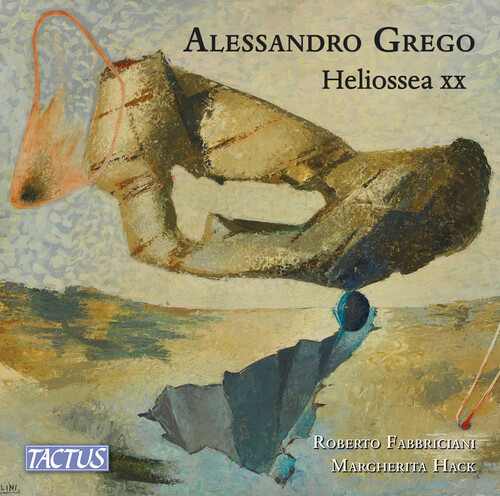Show results for
Deals
- 4K Ultra HD Sale
- Action Sale
- Alternative Rock Sale
- Anime sale
- Award Winners Sale
- Bear Family Sale
- Blu ray Sale
- Blu ray Special Editions
- Blues on Sale
- British Sale
- Classical Music Sale
- Comedy Music Sale
- Comedy Sale
- Country Sale
- Criterion Sale
- Electronic Music sale
- Hard Rock and Metal Sale
- Horror Sci fi Sale
- Kids and Family Sale
- Metal Sale
- Music Video Sale
- Musicals on Sale
- Mystery Sale
- Naxos Label Sale
- Page to Screen Sale
- Rap and Hip Hop Sale
- Reggae Sale
- Rock
- Rock and Pop Sale
- Rock Legends
- Soul Music Sale
- TV Sale
- Vinyl on Sale
- War Films and Westerns on Sale

Grego: Heliossea XX
- Format: CD
- Release Date: 3/7/2025

Grego: Heliossea XX
- Format: CD
- Release Date: 3/7/2025
- Composers: Alessandro Grego
- Label: Tactus Records
- UPC: 8007194108248
- Item #: 2694604X
- Genre: Classical Artists
- Release Date: 3/7/2025

Product Notes
Heliossea is an intermedia work for flutes and live electronics composed by Alessandro Grego in 2003 and premiered in Trieste on June 21 - the summer solstice - of the same year. It is a meditation on the rising of the sun, starting from the first ray of light at dawn breaking over the horizon. Astronomical data about the phenomenon, translated into sound using Grego's custom-designed software, plays a crucial role in shaping the music. In 2023, to mark the 20th anniversary of Heliossea's premiere, Alessandro Grego created a new version titled Heliossea XX. This updated rendition was performed for the first time on September 3, 2023, at the Miramare Castle Park in Trieste. The work is conceived as a tribute to Margherita Hack and her contributions to science and Italian culture. The new version of Heliossea, produced by the Prodigys Group, was realized in collaboration with inaf-oats, which oversaw the scientific aspects of the project, and the "Studio di Sonologia Computazionale" in Padua, under the direction of Alvise Vidolin, which managed the surround sound diffusion. Astronomical data provided by the National Institute for Astrophysics (thanks to it's director Fabrizio Fiore and Massimo Ramella) enhanced the work's precision and immersive quality.

